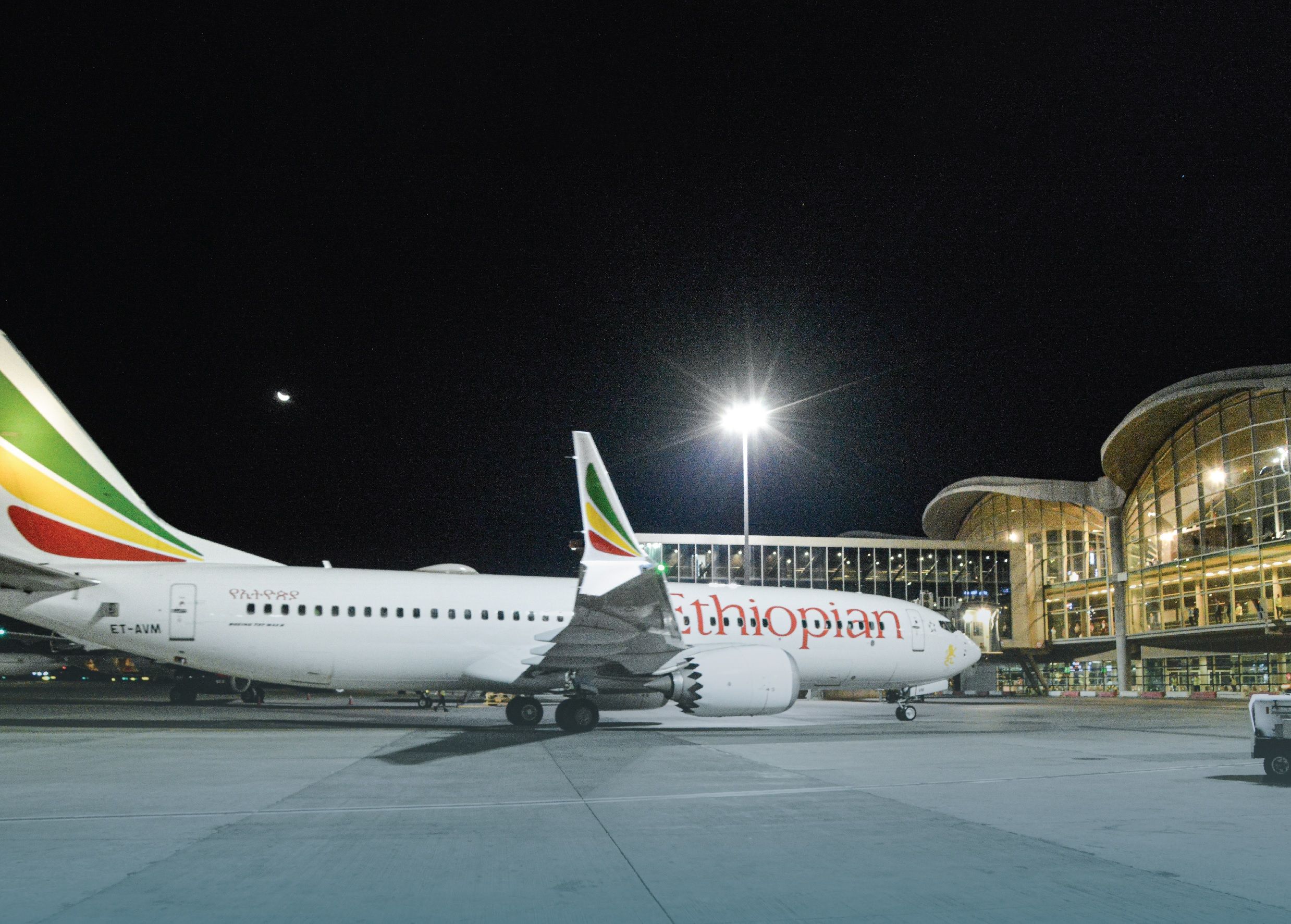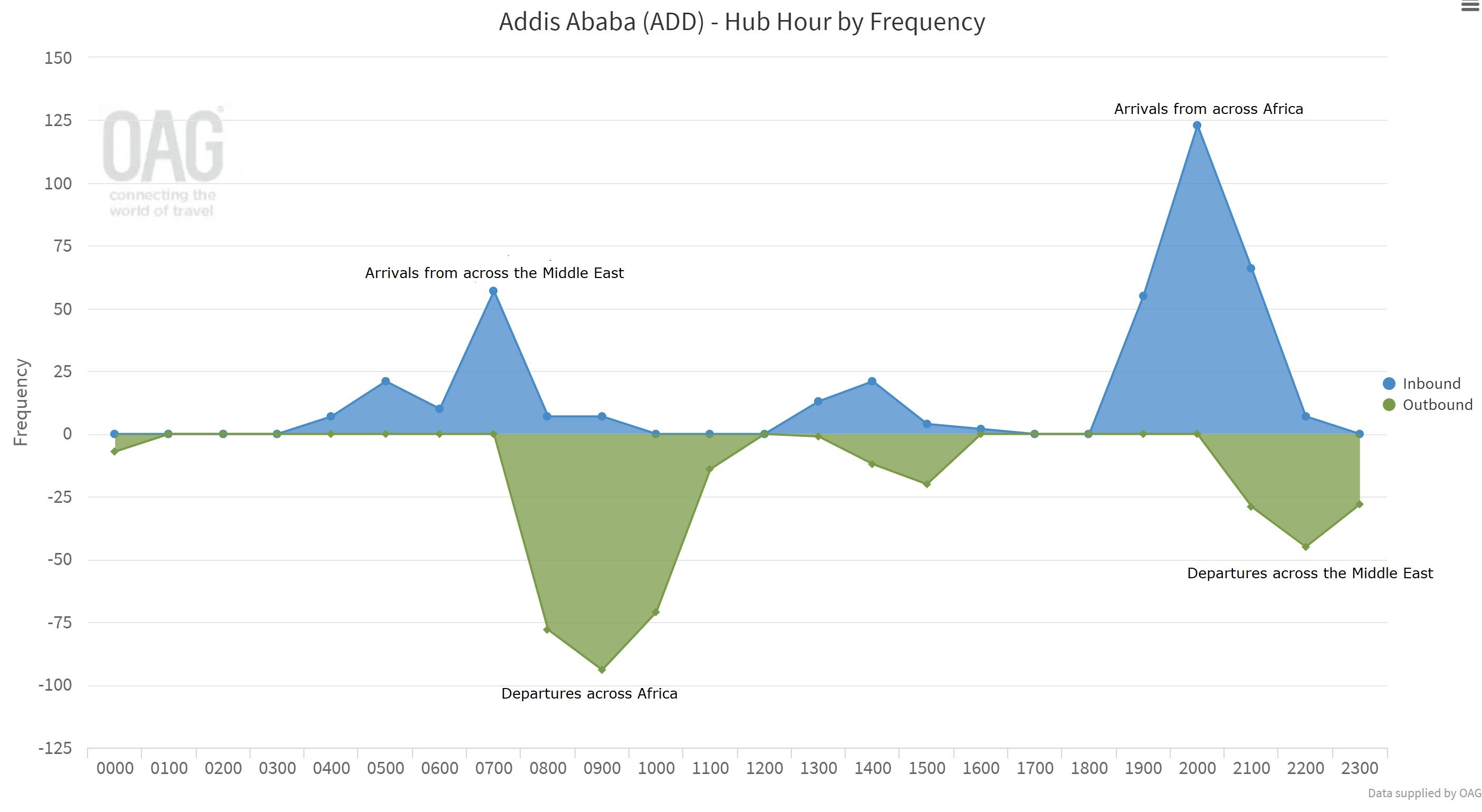Ethiopian Airlines has started flying between Addis Ababa and Amman, its 11th city in the Middle East. It's the first time in over 10 years that the route has been served – but not by Ethiopian. Until June 2012, defunct UK carrier bmi flew London Heathrow-Amman-Addis Ababa and back using A321s.
Third time lucky to Amman
It isn't the first time that Ethiopian planned Jordan service. It scheduled flights in July 2019, but they didn't take off. Then they were due to begin in August 2021, a period ravished by the pandemic, but they didn't. Finally, at 22:53 on September 19th, Flightradar24 shows that Ethiopian flight ET428 left Africa for Amman.
Operated by 4.2-year-old ET-AVM, a 160-seat, two-class B737 MAX 8, the first flight lasted for 3h 19m. Returning, ET429 departed from the Jordanian capital at 04:02 and arrived home at 07:17 after some 3h 15m. As you can see, it didn't quite keep to schedule:
- Addis Ababa to Amman: ET428, 22:30-02:05+1 (3h 35m block time); Mondays, Wednesdays, Saturdays
- Amman to Addis Ababa: ET429, 03:05-06:40 (3h 35m); Tuesdays, Thursdays, Sundays
Stay aware: Sign up for my weekly new routes newsletter.
Ethiopian to Amman
Ethiopian's 11th Middle East city
Between September 20th (the day of writing) and October 29th (the last day of the summer season), Ethiopian Airlines' Middle East network comprises the following. It's organized by the number of flights, with aircraft listed in order of how often they're deployed. Notice Doha International. Because of the World Cup, it is temporarily serving the old airport rather than Doha Hamad.
- Addis Ababa to Dubai: 3x daily, A350-900 and B777-300ER
- Addis Ababa to Beirut: 2x daily, B737-800, B737 MAX 8, B787-8, B787-9
- Addis Ababa to Jeddah: 1x daily, B787-8, A350-900
- Addis Ababa to Riyadh: 1x daily, B737 MAX 8, B787-8, B777-200LR
- Addis Ababa to Tel Aviv: 1x daily, A350-900, B777-300ER, B737-800, B787-9, B787-8, B777-200LR
- Addis Ababa to Kuwait: 6x weekly, B737-700, B737 MAX 8
- Addis Ababa to Muscat: up to 5x weekly, B737-800
- Addis Ababa to Bahrain: 3x weekly, B737-800, B787-8
- Addis Ababa to Dammam: 3x weekly, B737-800
- Addis Ababa to Doha International: 3x weekly, B737-800, B787-8, B787-9, B777-200LR
- Addis Ababa to Amman: 3x weekly, B737 MAX 8
The breadth of equipment stands out, reflecting aircraft availability, increased cargo capacity, and right-sizing seat capacity to passenger demand. This mix-and-match should increase overall seat load factors and revenue per available seat mile, both key route performance indicators.
Have you flown Ethiopian? If so, share your experiences in the comments.


